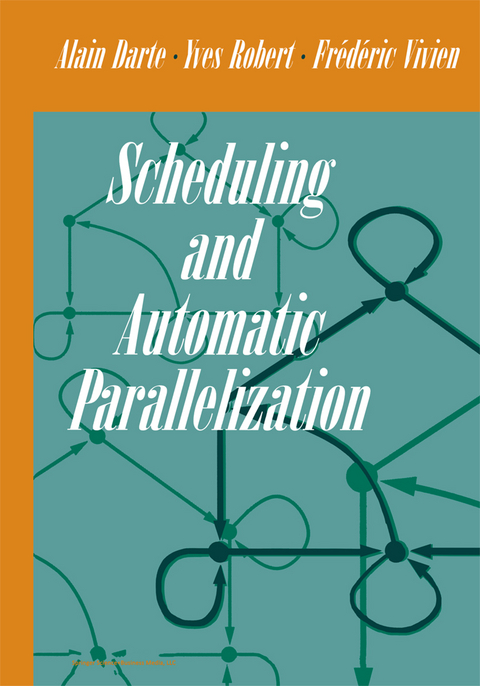
Scheduling and Automatic Parallelization
Seiten
2012
|
Softcover reprint of the original 1st ed. 2000
Springer-Verlag New York Inc.
978-1-4612-7113-0 (ISBN)
Springer-Verlag New York Inc.
978-1-4612-7113-0 (ISBN)
Readership This book is devoted to the study of compiler transformations that are needed to expose the parallelism hiddenin a program. This book is notan introductory book to parallel processing, nor is it an introductory book to parallelizing compilers. Weassume thatreaders are familiar withthebooks High Performance Compilers for Parallel Computingby Wolfe [121] and Super- compilers for Parallel and Vector Computers by Zima and Chapman [125], and that they want to know more about scheduling transformations. In this book we describe both task graph scheduling and loop nest scheduling. Taskgraphschedulingaims atexecuting tasks linked by prece- dence constraints; it is a run-time activity. Loop nest scheduling aims at ex- ecutingstatementinstances linked bydata dependences;it is a compile-time activity. We are mostly interested in loop nestscheduling,butwe also deal with task graph scheduling for two main reasons: (i) Beautiful algorithms and heuristics have been reported in the literature recently; and (ii) Several graphscheduling, like list scheduling, are the basis techniques used in task ofthe loop transformations implemented in loop nest scheduling.
As for loop nest scheduling our goal is to capture in a single place the fantastic developments of the last decade or so. Dozens of loop trans- formations have been introduced (loop interchange, skewing, fusion, dis- tribution, etc.) before a unifying theory emerged. The theory builds upon the pioneering papers of Karp, Miller, and Winograd [65] and of Lam- port [75], and it relies on sophisticated mathematical tools (unimodular transformations, parametric integer linear programming, Hermite decom- position, Smithdecomposition, etc.).
As for loop nest scheduling our goal is to capture in a single place the fantastic developments of the last decade or so. Dozens of loop trans- formations have been introduced (loop interchange, skewing, fusion, dis- tribution, etc.) before a unifying theory emerged. The theory builds upon the pioneering papers of Karp, Miller, and Winograd [65] and of Lam- port [75], and it relies on sophisticated mathematical tools (unimodular transformations, parametric integer linear programming, Hermite decom- position, Smithdecomposition, etc.).
I Unidimensional Problems.- 1 Scheduling DAGs without Communications.- 2 Scheduling DAGs with Communications.- 3 Cyclic Scheduling.- II Multidimensional Problems.- 4 Systems of Uniform Recurrence Equations.- 5 Parallelism Detection in Nested Loops.
| Erscheint lt. Verlag | 24.12.2012 |
|---|---|
| Zusatzinfo | XVI, 264 p. |
| Verlagsort | New York |
| Sprache | englisch |
| Maße | 178 x 254 mm |
| Themenwelt | Mathematik / Informatik ► Informatik ► Netzwerke |
| Mathematik / Informatik ► Informatik ► Software Entwicklung | |
| Mathematik / Informatik ► Informatik ► Theorie / Studium | |
| Informatik ► Weitere Themen ► Hardware | |
| ISBN-10 | 1-4612-7113-4 / 1461271134 |
| ISBN-13 | 978-1-4612-7113-0 / 9781461271130 |
| Zustand | Neuware |
| Haben Sie eine Frage zum Produkt? |
Mehr entdecken
aus dem Bereich
aus dem Bereich
entwickle, drucke und baue deine DIY-Objekte
Buch | Hardcover (2023)
Hanser, Carl (Verlag)
CHF 48,95


